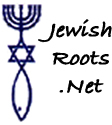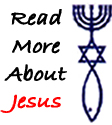






![]()
![]()
The author of this chart (Rich Robinson) comes from an Ashkenazic family, which means he has an Eastern European Jewish Background. Sephardic Jews come from Spain, Portugal, the Mediterranean, North Africa and Iraq. This chart compares the customs Richs' family knew to those of Sephardic Jews who've come to North America from Sephardic regions. Below are some colorful customs that he found.
Elements Of
|
Ashkenazic Customs -
|
Sephardic Customs - Who Knew? |
The Sukkah (Booth)
|
We decorated our Sukkot (plural of sukkah as well as the name of the holiday) with foliage and whatever fruit we could find at the supermarket... which usually meant apples, grapes and pears. Depending on how elaborate the sukkah was, it could either be disposed of or neatly packed up for next year. |
Syrian: The sukkah is decorated with the "seven species" of the land of Israel (barley, wheat, pomegranates, dates, figs, olives, grapes). Jedeo-Spanish: In addition to fruit, biscohos (pastries baked in the form of a circle or a Star of David are hung. Spanish and Portuguese: Cranberries and plums are included among the fruits. Moroccan: Besides fruit, sukkah decorations include hanging rugs and a special "Elijah's Chair" hung on the wall. On the last day, the sukkah is burned down by the children. |
The Lulav
|
The lulav was pre-assembled, waved during the holiday, and never seen again for another year. |
Moroccan: The lulav may be decorated with silk ribbons and a bell. After the holiday, it is sometimes placed in a flowerport to promote good health-sort of a Jewish feng shui. Some leave it on top of the Ark (the cabinet that houses the Torah scrolls in a synagogue) until Passover, and then use it as described below. Syrian, Moroccan, Judeo-Spanish: The lulav is kept till Passover and used as a "broom" in the search of leaven. |
The Etrog
|
The etrog (like the lulav) was brought forth for the holiday, then disappeared for the rest of the year. |
Syrian: After the holiday, the etrog is used for preparing jam. Judeo-Spanish: As long as it retains its aroma, the etrog is used for the weekly Havdalah (the end of the Sabbath ceremony, which includes spices and other fragrant ingredients). |
Hoshana Rabba(The last day of Sukkot) |
It was a minor day compared to the following day, Simchat Torah. |
Syrian, Moroccan, and Judeo-Spanish: Worshippers stay awake all night, studying Deuteronomy, Psalms and the Zohar (the chief book of Jewish mysticism). Judeo-Spanish: Some serve macaroni and cheese (yes, you read that right) in the sukkah on Hoshana Rabba. |
Simchat Torah
|
The children enjoyed jelly apples topped with little Israeli flags while adults paraded the Torah scrolls around the synagogue. Various people were given an aliyah to read the Torah blessing. |
Syrian: There is a special aliyah for children; afterwards, the congregation throws melebes (Jordan almonds) for them to eat. Moroccan: The children get to carry candles during the Hakkafot. Judeo-Spanish: Those from Salonika call their synagogue by a nickname and do something to enact the name: those from the "Rice Synagogue" cooked rice; those from the "Chair Synagogue" would seat the one holding the Torah scroll upon the chair - each adding to the festivity of the day. |
In this chart, Judeo-Spanish refers to Jews from the Balkan region and the Levant (Eastern Mediterranean region). Spanish and Portuguese refers to Jews from Amsterdam (where many settled following expulsions from Spain and Portugal).
Traditions change over time, and also from one community to another. Sephardic customs in North America may differ from those in their countries of origin.
Aliya - is a call to come up and recite the blessing over the torah reading. It is considered a great honor.
Hakkafot - "circuits" around the synagogue, when the Torah scrolls are paraded around the sanctuary several times. (Singular, hakkafah).
Read more about The Feast Of Tabernacles.
Created by Rich Robinson with Jews for Jesus for their newsletter October 2007 p.7.
Source for Sephardic customs and for the terminology of the different Sephardic groups: Herbert C. Dobrinsky, A Treasury of Sephardic Laws and Customs: The Ritual Practices of Syrian, Moroccan, Judeo-Spanish and Spanish and Portuguese Jews of North America; rev. ed. Hoboken:Ktav; New York: Yeshiva University Press, 1988.
Source for Ashkenazic customs: memories of how I (and most of the Jews for Jesus missionaries I know) grew up!